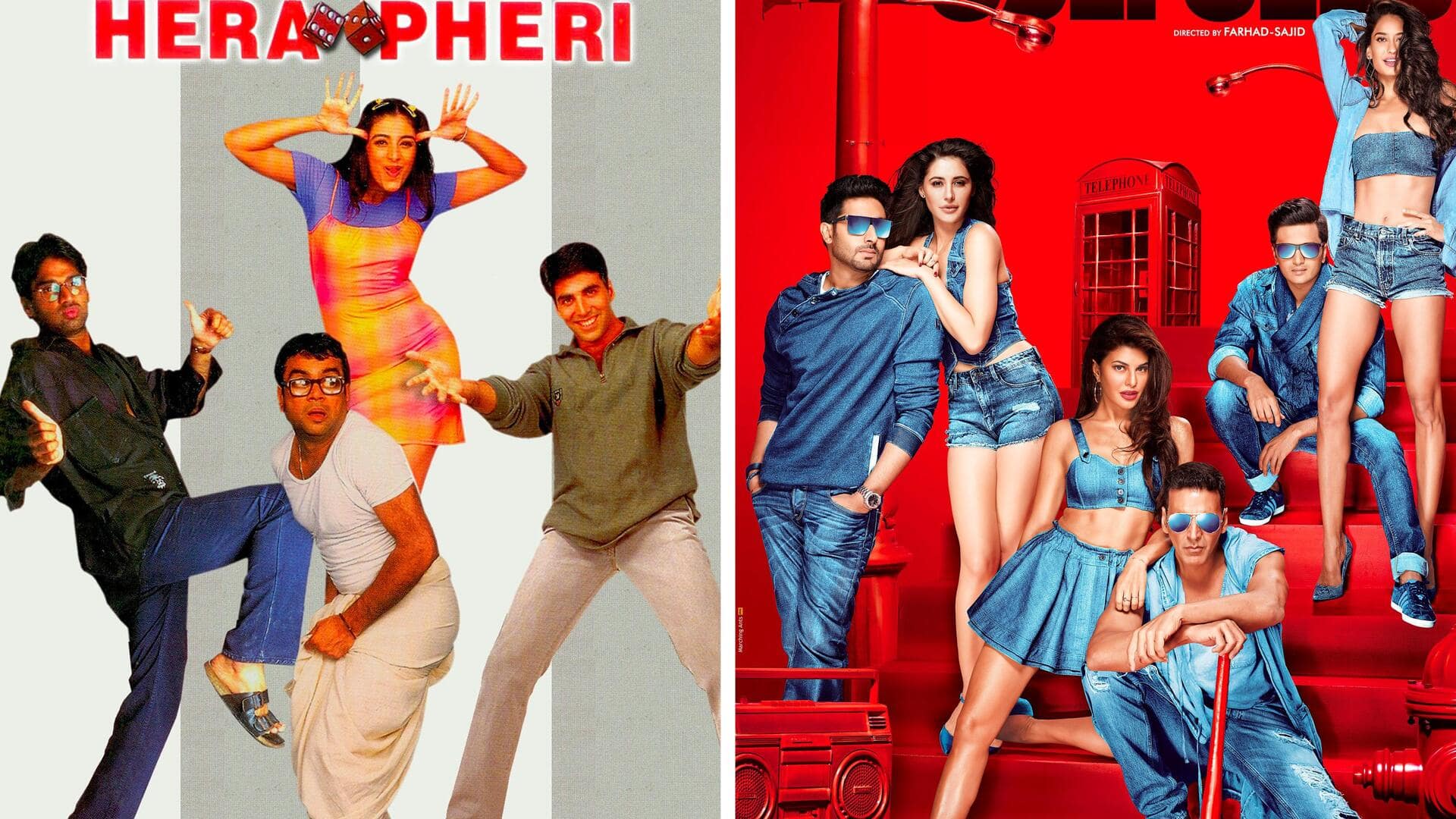
Explainer: Why franchise films are critically and commercially successful
What's the story
As hardcore movie lovers, we always aspire to see multiple installments of our favorite films so that we can immerse ourselves in our beloved cinematic universes repeatedly. Several movies—both in Bollywood and Hollywood—encash upon this popularity and turn into a franchise with multiple big-budget movies, usually led by the same primary cast. But what is the magic formula for the success of these movies?
Story
This is what franchise films do
Sequels and threequels allow the makers to develop characters further, branch off in different directions when it comes to the storyline, and add more gravitas and depth. They can also correct any loopholes that may have inadvertently transpired in the previous movie(s). Movie installments are also an opportunity to expand on some ideas that were possibly just touched upon in the previous version(s).
Example
Understand it through this example
For instance, in the 2000 Hindi film Hera Pheri, we saw the rags-to-riches story of Raju, Shyam, and Baburao and their encounter with a stroke of fortuitous luck. When Neeraj Vora directed its sequel—Phir Hera Pheri—he extended upon the characters: Raju and Shyam's love lives got a track, and Baburao's eccentricities increased. The sequel ended on a cliffhanger, paving the path for another installment.
Goodwill
We love to go back to comfortable, familiar worlds
When a film turns into a classic, it earns plenty of goodwill, which further augments its chances at the box office when the second/third part comes out. For instance, the audience flocked to the theater to watch Bhool Bhulaiyaa 2 despite it being only a spiritual sequel, and people are already counting the days till the release of Metro...In Dono. Familiar worlds entice us.
Unrelated sequels
Why do spiritual sequels also work so well?
Not all sequels/threequels carry the direct story of their predecessor, but viewers place their trust in them because they are aware of the setting, tone, humor, cast, and characters. Films in the Golmaal and Housefull series are not related to their older parts. But they still remain money-churners because of the track record of the previous films and audiences' familiarity with the setting.
Extension of story
Often, installments are used to extend the story
Sometimes, just one film is not enough to tell a story completely. So, you need an entire franchise. For example, the story of Vijay Salganonkar didn't end with Drishyam and Drishyam 2, so Drishyam 3 will be released in the coming years. ACP Jai Dixit was tasked with catching fraudulent thieves thrice in the Dhoom series. Similar premises but more gravity-laden and complex plots.
Franchises
Which is your favorite Indian film franchise?
Some popular Bollywood franchises are Golmaal (four movies), Singham (two films), Housefull (four films), Hera Pheri (two projects), Welcome (two projects), Tiger (two films), Dhamaal (three movies), Gadar (two films). They also include Dabangg (three films), Krrish (three), Baaghi (three projects), Race (two films), and Bhool Bhulaiyaa (two movies), besides South Indian ones like Baahubali (two movies), Drishyam (two films), and KGF (two films).